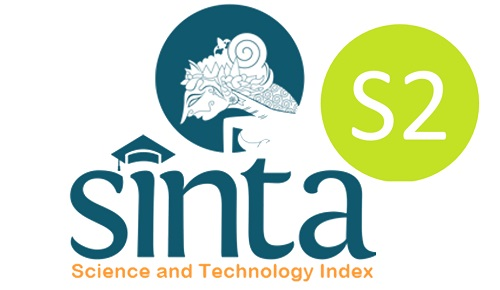PLACE-BASED EDUCATION APPROACH AS AN INNOVATION OF AN INTEGRATED CURRICULUM
DOI:
https://doi.org/10.22373/ej.v2i2.528Keywords:
Internet, Information and Communication Technology, Higher EducationAbstract
Curriculum design is aimed to promote equality of empowerment. In most practice, however, the curriculum purposes confront conflicts especially between national and local needs. Consequently, there are many insightful and innovative educational work which has relatively small advantages for students and schools in its flexibility and opportunity. This leads to a situation in which some groups have lack of opportunities in getting benefit from the educational curriculum application. This essay presents an appproch as an innovation of an integrated curriculum called as place-based education. The significance of this strategy is believed to be able to promote the content of learning to the level of local’s relevance and engagement. Finally, the more relevant of the learning content to the students’ socio-cultural life the broader participation they can play in the community and future career.Downloads
References
Artsiyanti, (2002). Bagaimana Meningkatkan Mutu Hasil Pelajaran Bahasa Inggris Di Sekolah, Pendidikan network, Retrieved from http://Re-Searchengines.Com/Artsiyanti.html
Brady, L. & Kennedy, K. (2003) ‘Curriculum Construction’, 2nd ed., Australia: Pearson Education Australia.
Brady, L. & Kennedy, K. (2007) ‘Curriculum Construction’, 3rd ed., Australia: Pearson Education Australia.
Chawla, L., & Escalante, M., (2007). Student Gains from Place-Based Education, University of Colorado at Denver and Health Sciences Center. Retrieved from http://www.foresthistory.org/education/Curriculum/StudentGains-Chawla.pdf
Ciardi, M. G., (2006). Place-based education in an urban environment, 231 (58), Oxford: Blackwell.
Commonwealth Department of Education, (2001). Innovation and best practice in schools: Review of literature and practice. Canberra City: Commonwealth.
Department of Education, Training and Youth Affairs, (2001). Doing it well, Canberra: Commonwealth of Australia.
Egel, I. P. (2009). English language learning and teaching styles in two Turkish primary schools, Social behavior and personality, 37(8), 1117-1128, Society for Personality Research (Inc.): Turkey, DOI 10.2224/sbp.2009.37.8.1117
Janice, L. K., & Clifford, E. (2000). Place-Based Curriculum and Instruction: Outdoor and Environmental Education Approaches, ERIC Clearinghouse on Rural Education and Small Schools Charleston WV. Retrieved from http://www.ericdigests.org/2001-3/place.htm
Kelly, A. V., (2009). The curriculum, theory and practice, 6th ed, London, California, New Delhi, Singapore: cvgbhghhh
Kennewell, S. (2001) „Using Affordances and Constraints to Evaluate the Use of Information and Communication Technology in Teaching and Learning.‟ Journal of Information Technology for Teacher Education, 10, Nos 1&2, 101-116.
Kim, M. M., Andrews, L. R., & Carr, D. L. (2004). Traditional versus Integrated Preservice Teacher Education Curriculum: A Case Study Journal of Teacher Education, 4 (55), DOI: 10.1177/0022487104266778
Krashen, S. D., & Terrel, T. D., (1983). The natural approach: language acquisition in the classroom, Pergamon/Alemany: UK, USA, Canada, Australia, France, Federal Republic of Germany.
Murray, M. and Greer, J., (1996). Rural development in Ireland, Cedric Chivers: Bristol
Pilot, A. & Bulte, A. M. W. (2006) „The Use of “Context†as a challenge for the Chemistry Curriculum: Its Success and the need for further development & Understanding‟, International Journal of Science Education, 28, 9, 1087-1112.
Powers, A. L., (2004). An evaluation of four place-based education programs, 4 (35), the journal of environmental education.
Promise of place, (2009). Enriching lives through place-based education, Retrieved from http://www.promiseofplace.org/what_is_pbe.
Silver, H. F., Strong, R. W., & Perini, M. J., (2000). So each may learn, integrating learning styles & multiple intelligences, Association for Supervision and Curriculum Development, Alexandria: Silver Strong & Associates.
White, R. V., (1988). The ELT curriculum, Oxford: Basil Blackwell.
Downloads
Published
Issue
Section
License
Proposed Policy for Journals That Offer Open Access
Authors who publish with Englisia journal agree to the following terms:
- Authors retain copyright and grant the journal right of first publication with the work simultaneously licensed under a Creative Commons Attribution License that allows others to share the work with an acknowledgement of the work's authorship and initial publication in this journal.
- Authors are able to enter into separate, additional contractual arrangements for the non-exclusive distribution of the journal's published version of the work (e.g., post it to an institutional repository or publish it in a book), with an acknowledgement of its initial publication in this journal.
- Authors are permitted and encouraged to post their work online (e.g., in institutional repositories or on their website) prior to and during the submission process, as it can lead to productive exchanges, as well as earlier and greater citation of published work (See The Effect of Open Access).









